TỪ TRẬN ĐỒNG SỔ, ĐẾN VIỆC THÀNH LẬP MIKE FORCE
Huy hiệu đeo vai của MIKE Force
Ảnh 1. Đại úy Joseph Stringham chỉ huy toán A-301 trong nhiệm kỳ 2 tại VN. Được giao nhiệm vụ tổ chức và huấn luyện 1 lực lượng phản ứng để tiếp cứu các trại Dân sự Chiến đấu (DSCĐ), ông đã lập MIKE Force đầu tiên với lính Nùng tháng 6 1965. Sau này ông lên tới Chuẩn tướng (BG).
Ảnh 2. Không ảnh của trại DSCĐ tại Hồ Ngọc Tảo Thủ Đức; đây là trung tâm huấn luyện cho MIKE Force.
Ảnh 3. BCH 5 Mike Force, chỉ huy bởi Toán B-55, và đã phục vụ như lực lượng tổng trừ bị của Liên đoàn 5 LLĐB Mỹ. Lúc đầu lực lượng được thành lập vào tháng 8/1965 bằng cách mở rộng đ.đ. người Nùng tuyển mộ trong năm 1964. Lực lượng này gồm người Hoa Chợ Lớn, VN, người Rhade, Raglai, và Koho và được tổ chức thành ba TĐ cộng (quân số nhiều hơn TĐ bình thường) và chỉ huy bởi Toán A-502, A-503, và A-551. Nhiệm vụ lúc đầu của họ chỉ là tiếp viện các trại bị tấn công, nhưng sau đó đã thực hiện hành quân cấp TĐ để bảo vệ những nơi gặp khó khăn và đôi khi hành quân cả ba TĐ. Trong tháng 11 1968, những lính Mike Force đã nhảy dù chiến đấu trên núi Cô Tô để tăng cường cho các hành quân ở đồng bằng sông Cửu Long. Ảnh 4. Nhiệm vụ đầu tiên của Mike Force là đánh giá kết quả ném bom của B-52.
Ảnh 5. Trại LLĐB khá lớn ở tỉnh lỵ Sông Bé của Phước Long, bị VC tấn công dữ dội, xuất phát từ khu rừng ở góc trên phải của ảnh. Những tấn công này dẫn đến thành lập MIKE Force.
Ảnh 6. Trong 2 ngày ác chiến tại Đồng Xoài, Toán A-342, gần như ko làm chủ trại. Lính của TĐ 52 BĐQ chiến đấu ở ngoại vi của trại.
Lời nói đầu:
Nghề chơi cũng lắm công phu.
Trong bài "trận Bình Giả" mới đăng, có nói rằng, "theo Đài Hà Nội, trong ngày 29/12/1964, họ đã quét sạch 1 TĐ quân biệt kích (có lẽ là DSCĐ) -- tại một ấp chiến đấu có tên là Ben Dong So. Họ nói đã giết 2 người Mỹ và lấy 100 võ khí". Đặt câu hỏi trên Google "1964 in vietnam war" thì tôi biết có trận đánh vào ngày 30.12,1964 tại 1 làng chiến đấu, có tên Đồng Sổ, xem hình, ở Bình Dương, nên tôi tìm tài liệu sau đây để viết về trận này -- ND)
Ảnh 7. Vùng 3 Chiến thuật từng là 1 thành trì (stronghold) của nổi dậy của VC năm 1965. Từ 1 mạng lưới công phu (elaborate) các căn cứ trong Chiến khu C và D và "Tam giác Sắt" VC đã đe dọa thủ đô SG. Lực lượng MIKE Force đầu tiên được lập ở Vùng này, bao gồm thủ đô SG.
Tưởng cũng nên nhắc lại về việc thành lập DSCĐ.
Ngày 4/11/61, dân Rhade ở Buôn Enao, 1 làng 400 dân cách Ban mê thuột 9.7 km, đã thỏa thuận với QLVNCH và CIA để trở thành 1 làng chiến đấu chống Cộng. Điều kiện của họ là chấm dứt mọi tấn công của QLVNCH vào các làng của họ và láng giềng Jarai; ân xá đối với những người Rhade đã từng giúp đỡ VC và CP sẽ cung cấp trợ giúp về y tế, giáo dục, và nông nghiệp. Đổi lại, Buôn Enao sẽ lập 1 lực lượng tự vệ, lúc đầu trang bị cung tên giáo mác (spear) và củng cố làng này. Nếu chứng tỏ thành công, mô hình Buôn Enao sẽ được sao chép (replicate) khắp nơi tại Cao nguyên miền Trung, chiếm phần lớn khu vực Nam VN, dù họ chỉ có tỉ lệ nhỏ về dân số. Đây là bắt đầu của chương trình DSCĐ.
Ngày 4/12, những lính LLĐB Mỹ đã đến Buôn Enao để bắt đầu chương trình. Những lính LLĐB VN có sẵn trong làng xây 1 bệnh xá và 1 hàng rào bao quanh làng, và huấn luyện một toán tự vệ 30 người. CIA cung cấp súng trường và súng tiểu liên cho toán này. Thí nghiệm Buôn Enao là cách tiếp cận toàn diện đối với đe dọa nổi dậy, vì dựa vào các chương trình xã hội và kinh tế cũng như các biện pháp quân sự để tạo nên 1 phong trào chống cộng trong dân Thượng -- có truyền thống ko tin người Việt dù họ theo phe nào.
Sau đây là phần chuyển ngữ.
1/ BÀI 1 VỀ TRẬN ĐỒNG SỔ:
...
"Các toán C lực lượng đặc biệt hoạt động trong 4 vùng chiến thuật (VCT) của QLVNCH. VCT số 3 hay Vùng 3 CT là vùng "nóng" nhứt chạy từ biên giới Việt-Miên đến bờ biển và bao gồm thủ đô SG. Trong VCT này có ba mật khu: Chiến khu C và D, và "Tam giác Sắt". Do đó, vài trại DSCĐ đã được lập ở bắc và tây SG nằm vắt ngang (astride) các đường tiếp tế từ Cam bốt tới thủ đô. Những trại này là mục tiêu của vài cuộc tấn công lớn của VC trong 1965. Những tấn công lộ rõ những khiếm khuyết quan trọng của lực lượng DSCĐ.
Các cuộc HQ của LLĐB tại Vùng 3 CT là trách nhiệm của Toán C-3 ở Biên Hòa, chỉ huy bởi trung tá Miguel de la Pena. Tháng Giêng, đại úy (đ.u.) Joseph Stringham nắm quyền chỉ huy Toán A-301 ở trại DSCĐ Bến Cát. Vài cuộc tấn công lớn của VC vào và chung quanh Bến Cát từ 12/1964 đến 5/1965 dẫn đến sự thành lập của MIKE Force.
Trại Bến Cát được xây tháng 9/1964 kế cận Tam giác Sắt ở phía nam và Chiến khu C và D ở phía bắc, xem bản đồ. Ở Bến Cát, Toán A-301 có ba đ.đ. DSCĐ (mỗi đ.đ. 150 người) và 1 toán LLĐB của Nam VN. Hai đ.đ. 348 và 349, toàn người Nùng; còn toán thứ 3 toàn dân Tàu Chợ Lớn.
 Trại DSCĐ Bến Cát của toán A-321, chụp khoảng tháng 11/1964.
Trại DSCĐ Bến Cát của toán A-321, chụp khoảng tháng 11/1964. "Dân Nùng là người Tàu, đã chạy khỏi TQ, vào VN từ thế kỷ thứ ba trước công nguyên, "đ.u. Stringham nhớ lại. "Ko nghi ngờ về lòng trung thành của họ. Họ 100/100 chống cộng." Những người Nùng cương trực, thiện chiến trở thành hạt nhân của lực lượng MIKE Force sau khi tự chứng tỏ qua 2 trận đánh ác liệt gần Bến Cát.
Trận đánh Đồng Sổ xảy ra ngày 30.12.64. Trong 1 làng nhỏ, đ.đ. 346 DSCĐ với người Việt gốc Hoa (dân Chợ Lớn) với 3 cố vấn LLĐB Mỹ, đã bị tràn ngập, sau 1 trận tấn công đêm của trung đoàn 272 VC, 1 đv chánh quy khoảng 1000 người. Đ.đ. nhanh chóng bị tràn ngập, đến nổi đ.đ. 349 Nùng, ở cách đó 2 km ko kịp cứu họ. Chỉ có 1 cố vấn sống sót, đó là trung sĩ Jacobson. Trong cuối tháng 1/65, vào buổi tối 30 tết, đ.u. Stringham nắm quyền chỉ huy toán A-301 ở Bến Cát. 5 tháng sau đó, 1 thảm họa tương tự Đồng Sổ xảy ra.
"Đ.đ. 349 Nùng của chúng tôi đã bị tràn ngập ngày 22/5/1965, ở giữa trưa," Stringham nói. "Chỉ có đ.đ. 348 Nùng thoát được." Một cuộc phục kích ở trại bò sữa của Bà Nhu 5 km cách Bến Cát đã tiêu diệt đ.đ. 349 giữa đồng trống (open clearing)." Khi trận đánh chấm dứt, toán A-301 gần như tan nát. Hai cuộc tấn công trên đây (tại Đồng Sổ và phục kích gần trại bò sữa) đã làm chết trên 200 DSCĐ. Những người sống sót của A-301, với đ.đ. 348 Nùng và 1 nhóm nhỏ DSCĐ người Miên được lịnh bỏ Bến Cát ngày 6/6/1965 và tái lập ở Hồ Ngọc Tảo, 1 trung tâm huấn luyện gần làng Thủ Đức, gần SG.
Trong khi đó, VC tiếp tục tấn công các trại trong khu vực.
Trong khi toán A-301 đang phục hồi ở Hồ Ngọc Tảo, toán A-342 ở Đồng Xoài bị tấn công ngày 6/6 bởi khoảng 1 trung đoàn VC, trên 1000 người. Ngày 25/5/1965, toán A-324 đến 1 trại bỏ hoang này của BĐQ, ý nói Đồng Xoài, với ba đ.đ. DSCD và 1 toán công binh hải quân hay SeaBee. Họ bị tấn công trong lúc xây dựng trại. Sau 14 giờ chiến đấu dữ dội, toán A-342 phải di tản. Trưởng trại, thiếu úy Charles Williams được anh dũng bội tinh. Đ.u. Stringham rất thất vọng vì chỉ có thể nghe trên máy mà ko thể làm gì hết.
"Chúng tôi chỉ cách họ 48.28 km mà ko thể làm gì hết," đ.u. Stringham than vãn (lament). "Chúng tôi bị tấn công mà ko thể giúp đỡ lẫn nhau."
Sau trận Đồng Xoài, đ.u. lên BCH C-3 ở Biên Hòa gặp trung tá de la Pena. "Tôi nói với ông tôi có sẵn 1 đ.đ. 150 người thiện chiến mà ko có việc gì để làm". Là 1 cựu chiến binh (CCB) dầy dạn kinh nghiệm của thế chiến 2 (TC) 2 và chiến tranh Cao ly, ông de la Pena đã nói tôi "hãy trở về ngồi xuống, và im lặng." Sau 1 giờ, Stringham được gọi về C-3 để nhận nhiệm vụ mới: thành lập 1 lực lượng phản ứng nhanh.
Những trận Bến Cát, Đồng Xoài, và Sông Bé đã cho thấy nguy cơ của đ.đ. DSCĐ vào ban đêm. Quân nam VN ko hành quân vào buổi tối, họ chỉ tăng viện vào ban ngày. Bóng tối đã ngăn (preclude) yểm trợ tiếp cận của KQ. Các cảm tình viên VC trong hàng ngũ DSCĐ khiến các đ.đ. này ko tin cậy. Từ những làng do VC kiểm soát, chúng có thể tiếp cận trại để tấn công mà ko sợ trừng phạt (impunity). Dân làng ko dám báo cáo hoạt động của VC cho trại. Giải pháp là lập 1 lực lượng phản ứng gồm những lính huấn luyện thuần thục (như biết nhảy dù, vài thế võ cận chiến, và trả lương cao hơn DSCĐ, v.v..) để nhanh chóng tăng viện trại khi bị tấn công. Việc tuyển người, huấn luyện, và chỉ huy lực lượng mới này là nhiệm vụ của toán A-302.
Chuyển ngữ từ: "Colonel Mike", The origin of the MIKE Force in Vietnam.
====
2/ BÀI HAI VỀ TRẬN ĐỒNG SỐ
...
"Như thông lệ, VC luôn luôn có sáng kiến. Trong đêm 29-30/12/1964, trung đoàn 2 (theo sách Colonel MIKE, đó là tr.đ. 272) của Trung ương Cục miền Nam đã tấn công 1 đ.đ. DSCĐ đóng tại ấp Đồng Sổ tỉnh Bình Dương. Với đ.đ. này là 3 cố vấn của Toán A-314, mới đến VN và đặt căn cứ ở Bến Cát, 10 km phía nam của ấp. "VC hàng trăm tên, có mặt khắp nơi," hạ sĩ Roy Jacobson nhớ lại.
" Tôi gần như ko thấy gì cả vì hàng ngàn đạn súng trường và tự động bắn rất gần, từ mọi phía, với tiếng nổ liên tục của cối, đạn phóng lựu, và lựu đạn của chính chúng tôi... Tôi chỉ phân biệt dựa vào hình dáng. Chúng tràn tới bất chấp đạn bắn từ chúng tôi. Lắp băng đạn mới và tiếp tục bắn, càng nhanh càng tốt...Tôi bắn ko cần nhắm vì địch chỉ cách chúng tôi vài mét, từ phía trước, bên hông và phía sau."
Thượng sĩ (master sergeant) William Siegrist, (sau đó đã chết trong trận này), hét vào máy, "VC đã tràn vào cổng làng và có mặt khắp nơi." (Đại đội này đóng trong 1 làng chiến đấu, 1 loại ấp chiến lược -- ND). Ông gọi pháo nhưng vô ích. Trong 150 DSCĐ có 28 chết, 26 bị thương, và 11 mất tích. Siegrist và 1 người Mỹ khác tử trận và được truy thăng Ngôi sao Bạc. Chỉ có Hạ sĩ Jacobson thoát chết. Ông núp trong rừng cạnh QL-13 và trông thấy VC rời chiến trường bằng 1 đám xe gắn máy ba bánh, có lẽ xích-lô máy. Một tên địch ngừng lại và đái vào bụi rậm mà Jacobson trốn. Sáng hôm sau, ông trở làng với viện binh. "Đường sá trong ấp đầy xác lính DSCĐ, nằm chết bên vũng máu trộn bùn. Tôi ko thể tưởng tượng máu nhiều như vậy -- như vũng nước sau cơn mưa lớn. Lính DSCĐ đã bị lột hết giày vớ, quần áo và võ khí. "Không thấy xác địch nhưng quân đồng minh ước lượng chúng thương vong cả trăm tên".
Chuyển ngữ từ Advice and Support: The Middle Years January 1964 - June 1965, trang 396.
3/ Theo 1 nguồn tin của quân sử Mỹ:
Trung sĩ Siegrist là cố vấn của 1 Task Force gồm ba đại đội (đ.đ.), trong 1 hành quân (HQ) mở đường vào ban đêm trên một QL. Sau khi task force lập 1 chu vi phòng thủ và 1 tiền cứ tại Ấp Đồng Sổ, gần Bến Cát, tỉnh Bình Dương, khoảng hai tiểu đoàn (TĐ) đã tấn công họ dữ dội. Khi vị chỉ huy VN tử trận, trung sĩ đã bất chấp hỏa lực địch để gọi pháo binh. Khi địch tràn ngập task force, ông đã dũng cảm gọi pháo bắn 300 quả 105 ly trên vị trí. Ông đã chết vì vết thương trí mạng trong trận cận chiến sau đó.
Ngày 28/4/1965, ông đã được TT Mỹ truy tặng Ngôi sao Bạc do hành động dũng cảm này.
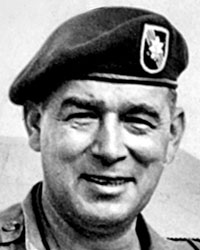
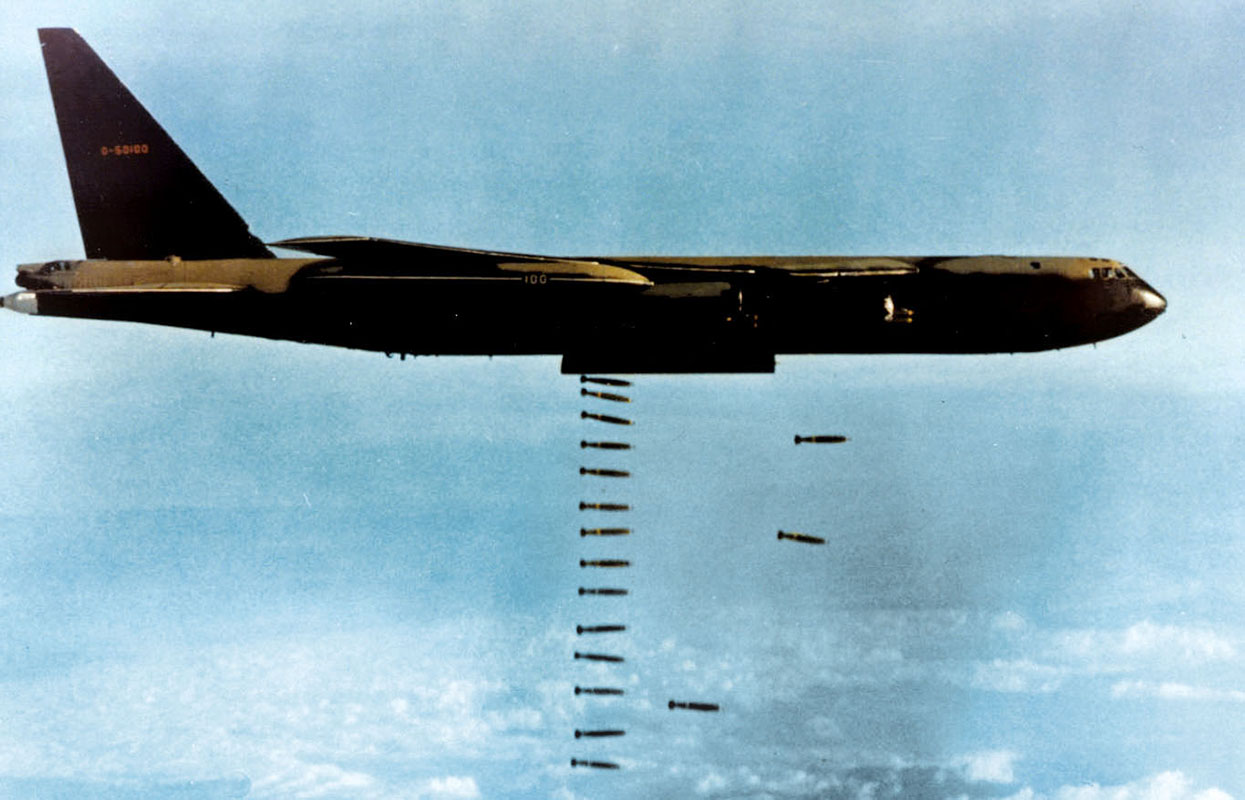
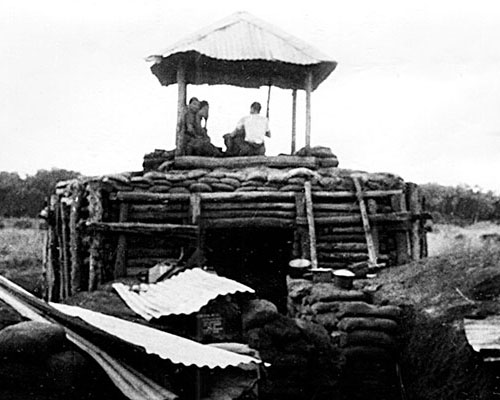
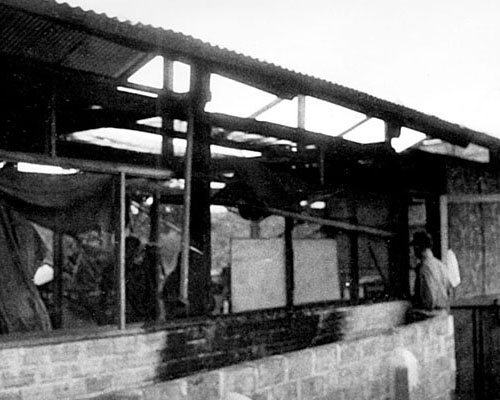
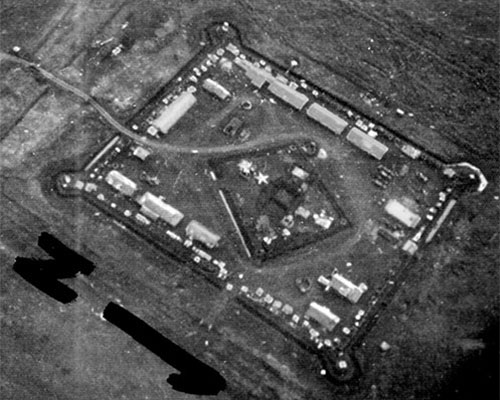

.png)
.jpg)

.jpg)




.jpg)










